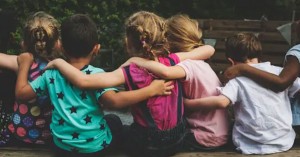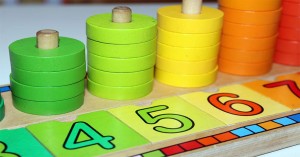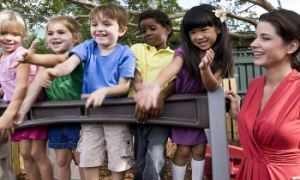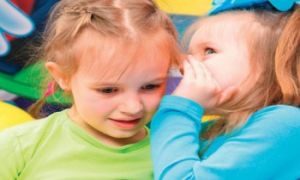Intentional Teaching examples are provided for each key focus and significant aspect of learning.
When educators explicitly teach knowledge and skills to individuals or small groups that support the children learning it is intentional teaching (updates as of 2019).
Identity
1.1 Building a sense of security and trust.
For example, teachers:
- collaborating with children and their families to make them feel welcome and valued
- modelling how children can seek help and comfort
- providing learning opportunities for children to explore and engage with new experiences
- providing choices about environments, and spaces for children to feel calm and comforted
1.2 Acting with independence and perseverance.
For example, teachers:
- encouraging children to manage personal belongings and daily routines
- using open-ended questioning to support children’s agency and decision-making
- encouraging children verbally and non-verbally to continue with what they are doing
- reflecting with children on their learning progress
- scaffolding or making adjustments to learning experiences to enable children to make attempts and practise skills.
1.3 Building a confident self-identity.
For example, teachers:
- providing learning opportunities to raise awareness of children’s own culture/s
- encouraging children and families to share images, objects and resources that reflect their culture/s
- identifying words and phrases that connect the children’s home languages and Standard Australian English (SAE)
- reflecting with children on their learning progress
- making connections to learning by displaying images or artefacts that represent children’s identities.
Connectedness
2.1 Building positive relationships.
For example, teachers:
- modelling and explaining cooperation skills, providing learning opportunities for children to practise these in play and purposeful interactions
- scaffolding a problem-solving approach to enable children to collaborate and resolve conflicts
- identifying children’s rights and responsibilities in everyday situations
- negotiating with children in situations that arise around the rights of others
- making connections to different points of view, ideas or opinions
- explaining empathy through stories and picture books to build children’s understanding of different ways of learning, different abilities and different perspectives.
2.2 Showing respect for diversity.
For example, teachers:
- encouraging children’s attempts to listen to and respect different ideas or opinions
- challenging stereotypical representations of people in texts and everyday situations
- making connections by identifying stereotyping or bias, using drama, books, pictures or age-appropriate multimedia
- collaborating with family and community members to talk about the importance of their culture/s
- making connections with Elders and community members for advice about culturally appropriate resources and how to respectfully include these in kindergarten learning
- researching and proactively building cultural understanding about Aboriginal peoples and Torres Strait Islander peoples.
2.3 Showing respect for environments.
For example, teachers:
- explaining how and why everyone is responsible for caring for the kindergarten environment
- collaborating to investigate the relationship between people, land, plants and animals
- encouraging curiosity about the world and the impact of people on environments
- researching to discuss positive actions about current environmental issues in response to children’s concerns
- reflecting on learning experiences.
Wellbeing
3.1 Building a sense of autonomy.
For example, teachers:
- identifying and acknowledging children’s emotions
- making connections between children’s actions and their emotions
- modelling ways to recognise and express feelings
- encouraging children to use modelled strategies to regulate their emotions
- explaining and scaffolding problem-solving strategies to encourage children to manage challenging interactions
- encouraging children to keep trying when faced with challenging experiences
- reflecting on the use of relaxation strategies to manage emotions
3.2 Exploring ways to be healthy and safe.
For example, teachers:
- explaining healthy choices and the purpose of health-related routines
- providing learning opportunities for children to remember and practise health-related routines
- collaborating with families and other professional partners to reinforce health-related routines
- explaining the purpose of safety rules and instructing children in the safe use of kindergarten equipment
- negotiating rules with children when new or potential safety issues arise
- providing learning opportunities for children to practice and show they can follow safety rules
- identifying unsafe behaviour and supporting children to make responsible choices.
3.3 Exploring ways to promote physical wellbeing.
For example, teachers:
- encouraging children’s engagement in gross motor learning experiences to build strength to manipulate objects and equipment with confidence and control
- providing choices and materials for children to practise fine motor control
- explaining why physical activity is important for children’s bodies and brains
- challenging children to explore materials with various sensory properties.
Active Learning
4.1 Building positive dispositions towards learning.
For example, teachers:
- encouraging curiosity, investigating and problem-solving in everyday situations
- challenging children to make links between ideas and experiences
- identifying and imagining ways to use voice, language, gestures, costumes and/or props related to roles in dramatic play
- explaining new vocabulary in different contexts
4.2 Showing confidence and involvement in leanring.
For example, teachers:
- collaborating to share children’s ideas, knowledge and discoveries
- encouraging children to notice, hypothesise, experiment, record and share findings
- identifying new vocabulary in different contexts
- explaining the reasons why experiments did or did not work
- making connections to other aspects of problem-solving that children may need to consider
4.3 Using technologies for learning and communication.
For example, teachers:
- modelling the use of technologies
- collaborating to use technologies to investigate or solve a problem
- identifying ways to use technologies for learning
- providing choices of everyday technologies for children to use
Communicating
5.1 Exploring and expanding language.
For example, teachers:
- modelling the use of language (SAE, first language, signed or AAC) to communicate
- identifying new vocabulary and language patterns in songs, stories and rhymes
- making connections to how language is used for various purposes, such as explaining, describing and imagining
- identifying ways to listen, respond to others and take turns in conversations.
5.2 Exploring literacy in personally meaningful ways.
For example, teachers:
- explaining the purposes of different texts and how they can be used
- making connections between sounds and letters, starting with initial sounds in children’s names
- listening to children’s oral language, including sounds and letters
- explaining how children can use sounds, letters, words and sentences to communicate
- identifying the sounds, symbols and visual images that children attend to when ‘reading’
- encouraging and reinforcing children’s attempts at writing.
5.3 Exploring numeracy in personally meaningful ways.
- making connections to mathematical concepts in everyday contexts
- explaining numbers, counting, ordering and comparing
- encouraging children to use mathematical language
- identifying similar attributes to form sets of objects and comparing the number of objects in small collections
- making connections to patterns in everyday environments, paintings, constructions, dances and/or architecture
Reference:
State Government Of Queensland (2019), Queensland Kindergarten Learning Guidelines







 Here is the list of the EYLF Learning Outcomes that you can use as a guide or reference for your documentation and planning. The EYLF
Here is the list of the EYLF Learning Outcomes that you can use as a guide or reference for your documentation and planning. The EYLF The EYLF is a guide which consists of Principles, Practices and 5 main Learning Outcomes along with each of their sub outcomes, based on identity,
The EYLF is a guide which consists of Principles, Practices and 5 main Learning Outcomes along with each of their sub outcomes, based on identity, This is a guide on How to Write a Learning Story. It provides information on What Is A Learning Story, Writing A Learning Story, Sample
This is a guide on How to Write a Learning Story. It provides information on What Is A Learning Story, Writing A Learning Story, Sample One of the most important types of documentation methods that educators needs to be familiar with are “observations”. Observations are crucial for all early childhood
One of the most important types of documentation methods that educators needs to be familiar with are “observations”. Observations are crucial for all early childhood To support children achieve learning outcomes from the EYLF Framework, the following list gives educators examples of how to promote children's learning in each individual
To support children achieve learning outcomes from the EYLF Framework, the following list gives educators examples of how to promote children's learning in each individual Reflective practice is learning from everyday situations and issues and concerns that arise which form part of our daily routine while working in an early
Reflective practice is learning from everyday situations and issues and concerns that arise which form part of our daily routine while working in an early Within Australia, Programming and Planning is reflected and supported by the Early Years Learning Framework. Educators within early childhood settings, use the EYLF to guide
Within Australia, Programming and Planning is reflected and supported by the Early Years Learning Framework. Educators within early childhood settings, use the EYLF to guide This is a guide for educators on what to observe under each sub learning outcome from the EYLF Framework, when a child is engaged in
This is a guide for educators on what to observe under each sub learning outcome from the EYLF Framework, when a child is engaged in When observing children, it's important that we use a range of different observation methods from running records, learning stories to photographs and work samples. Using
When observing children, it's important that we use a range of different observation methods from running records, learning stories to photographs and work samples. Using The Early Years Learning Framework describes the curriculum as “all the interactions, experiences, activities, routines and events, planned and unplanned, that occur in an environment
The Early Years Learning Framework describes the curriculum as “all the interactions, experiences, activities, routines and events, planned and unplanned, that occur in an environment


